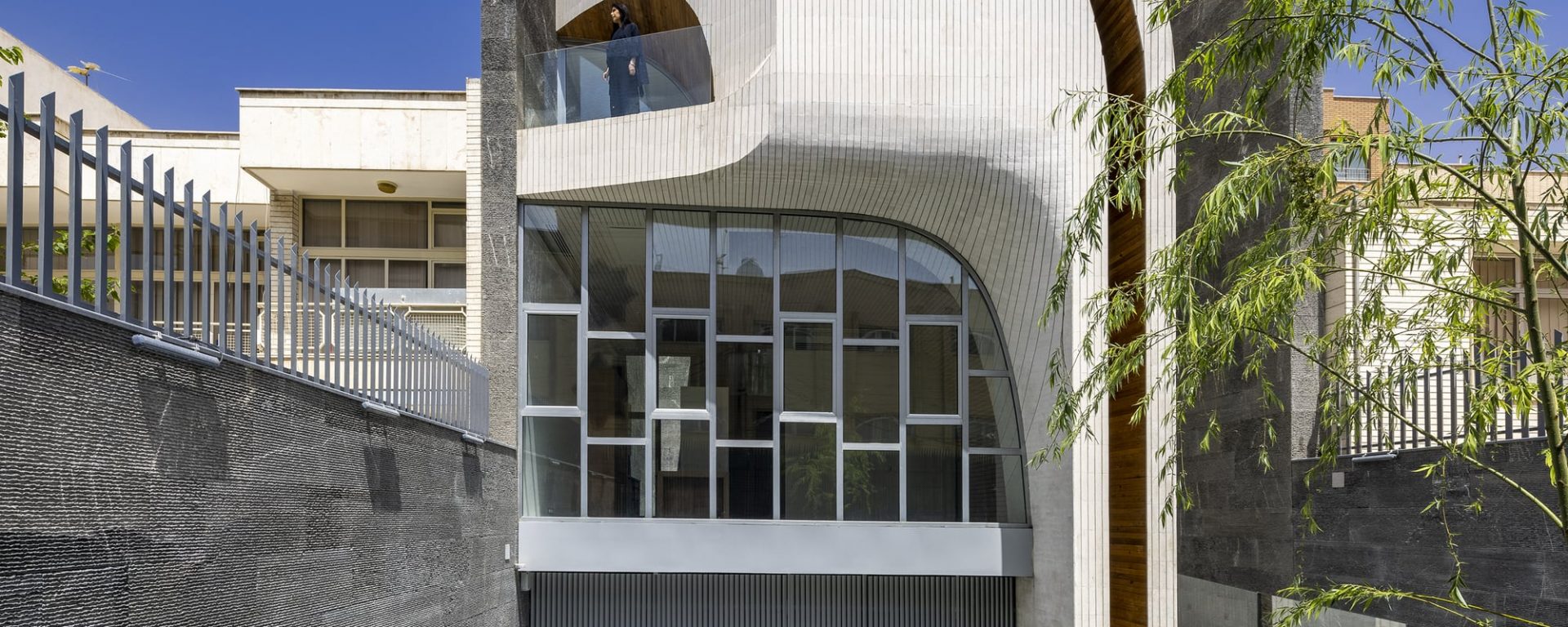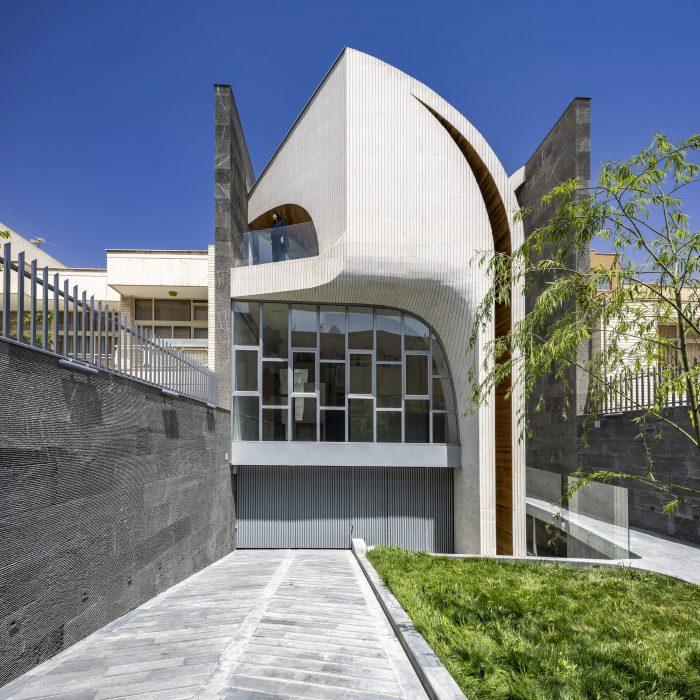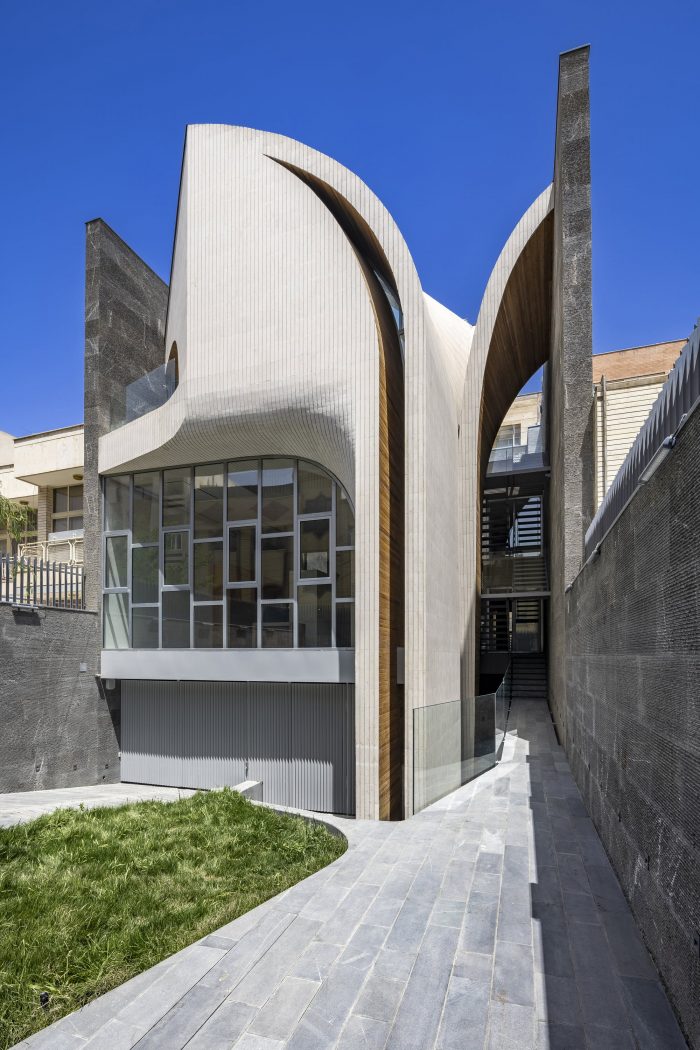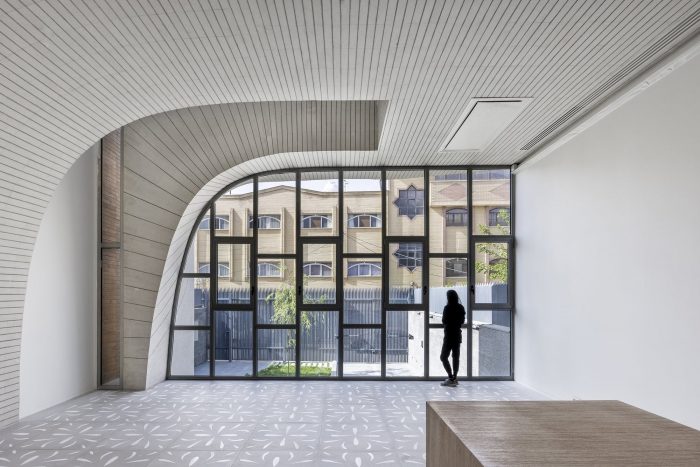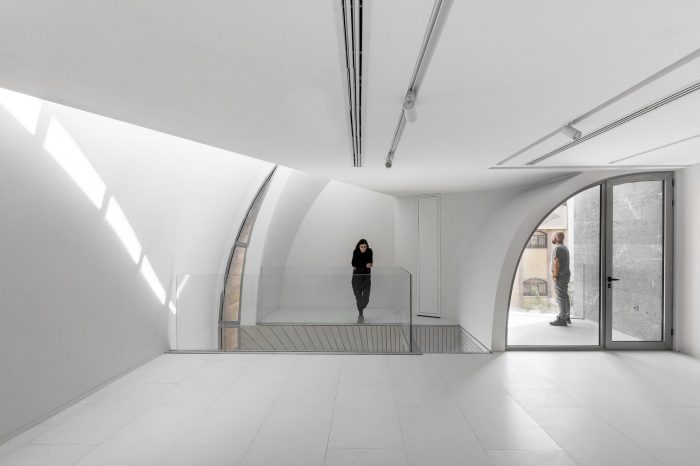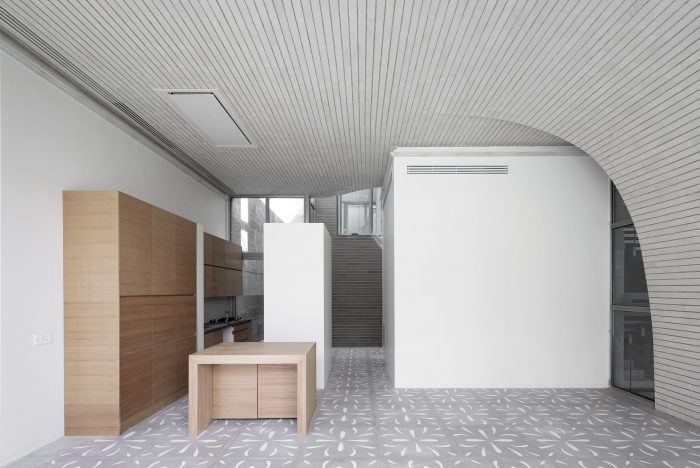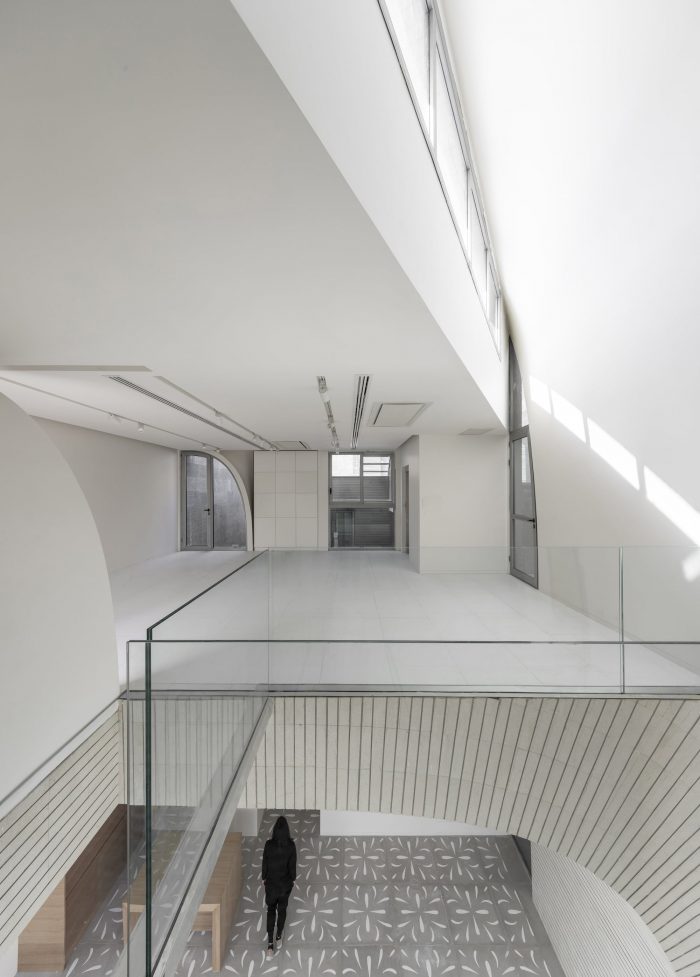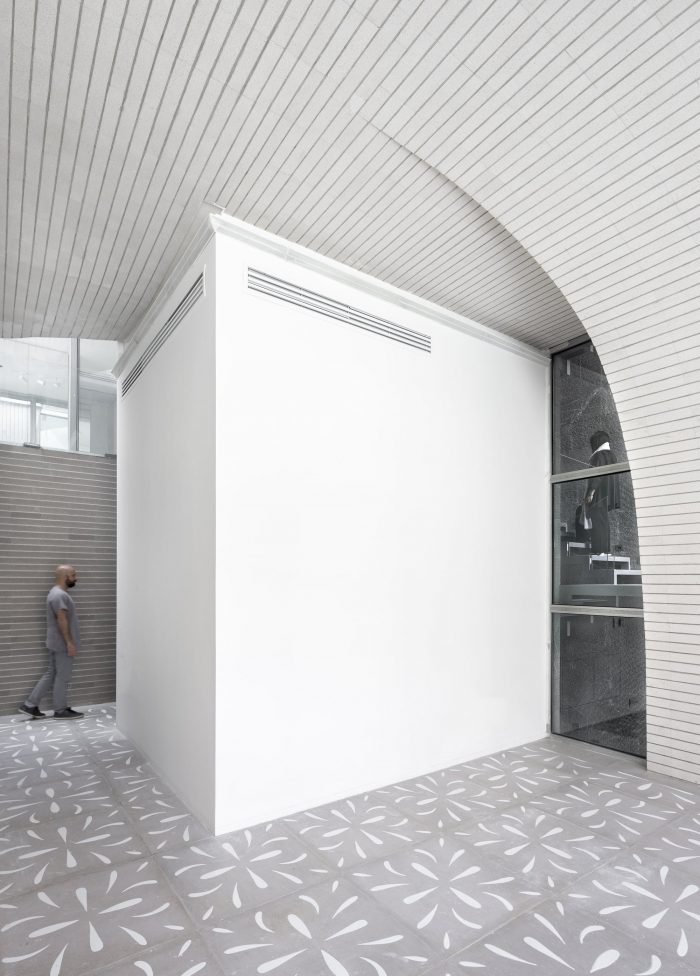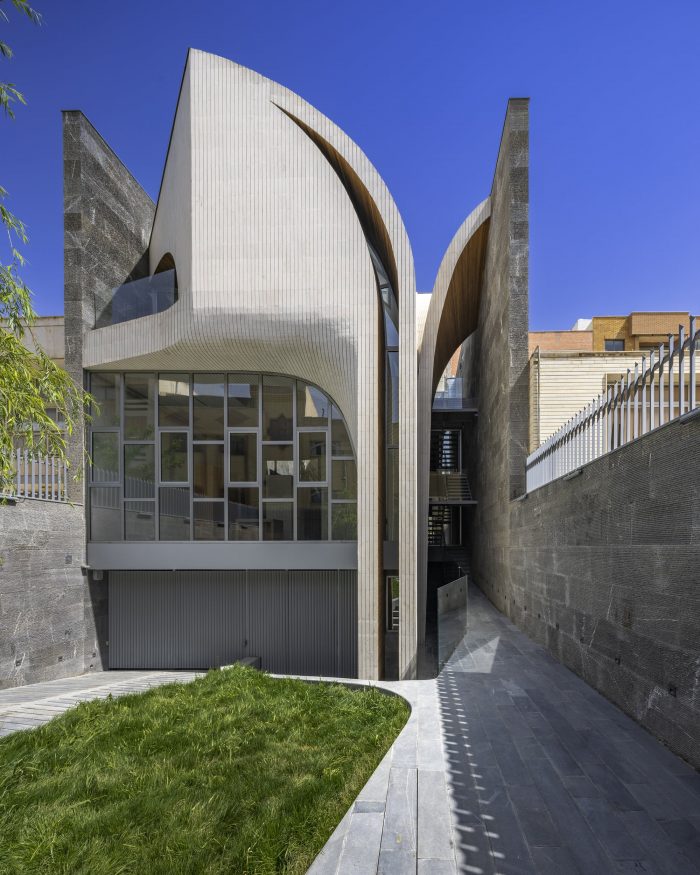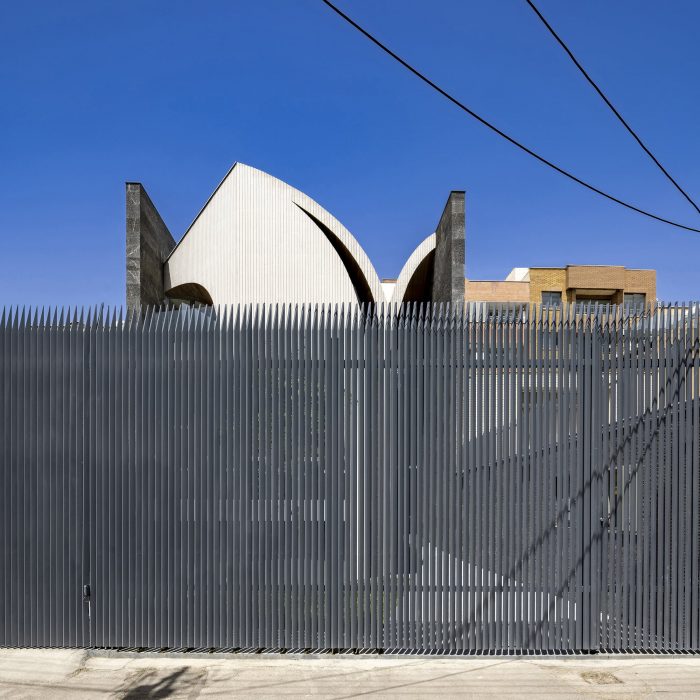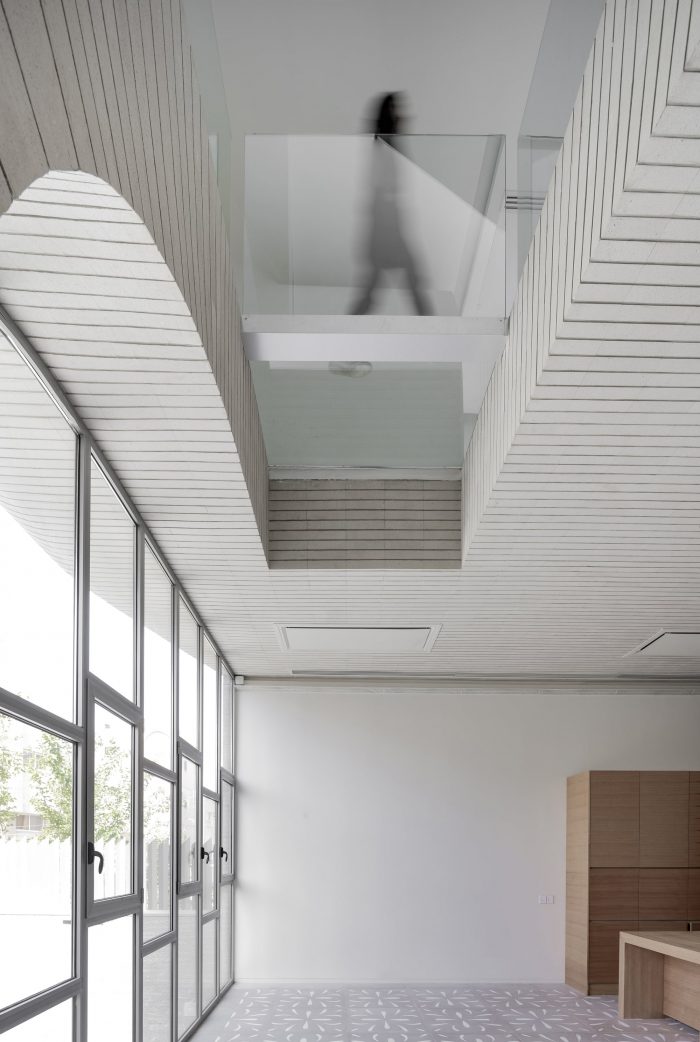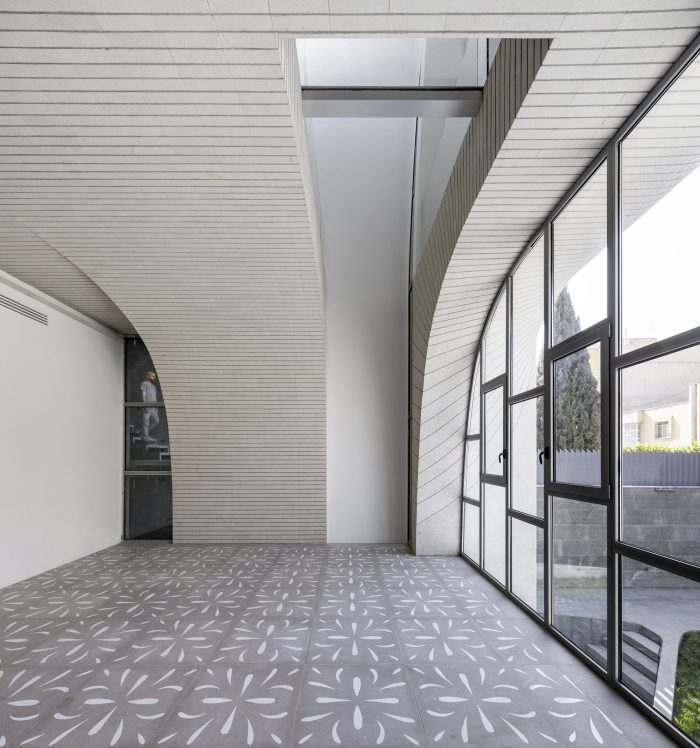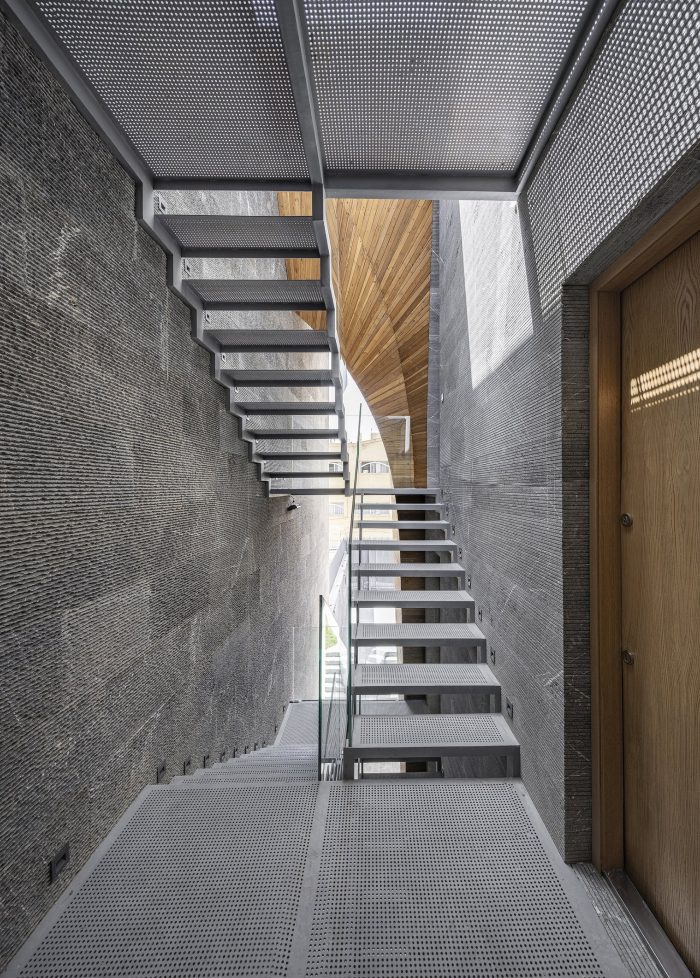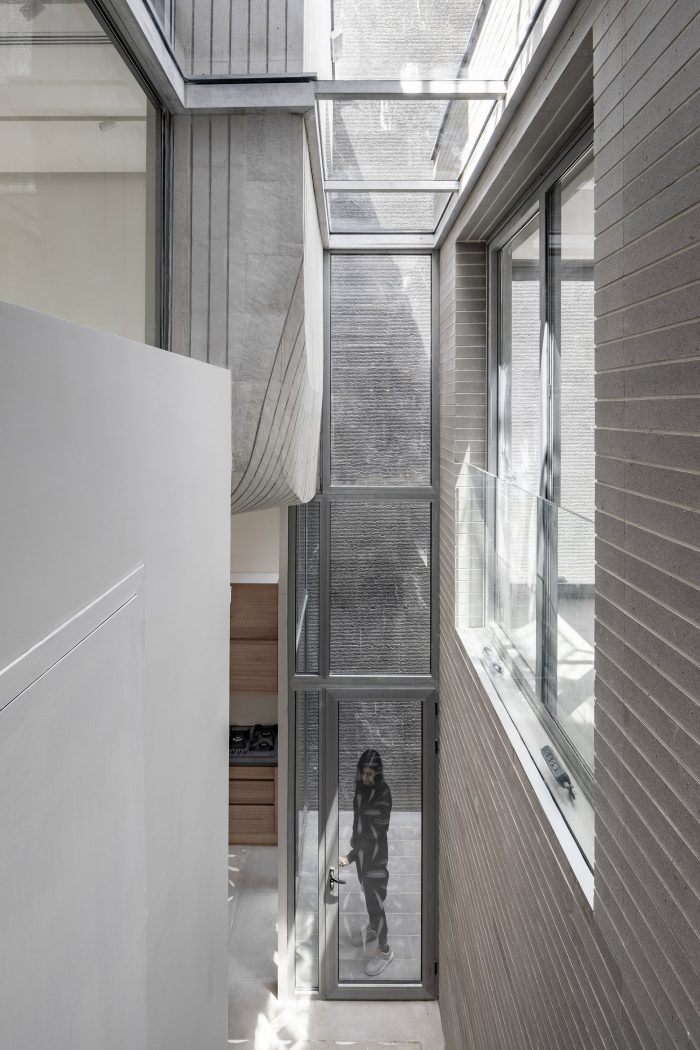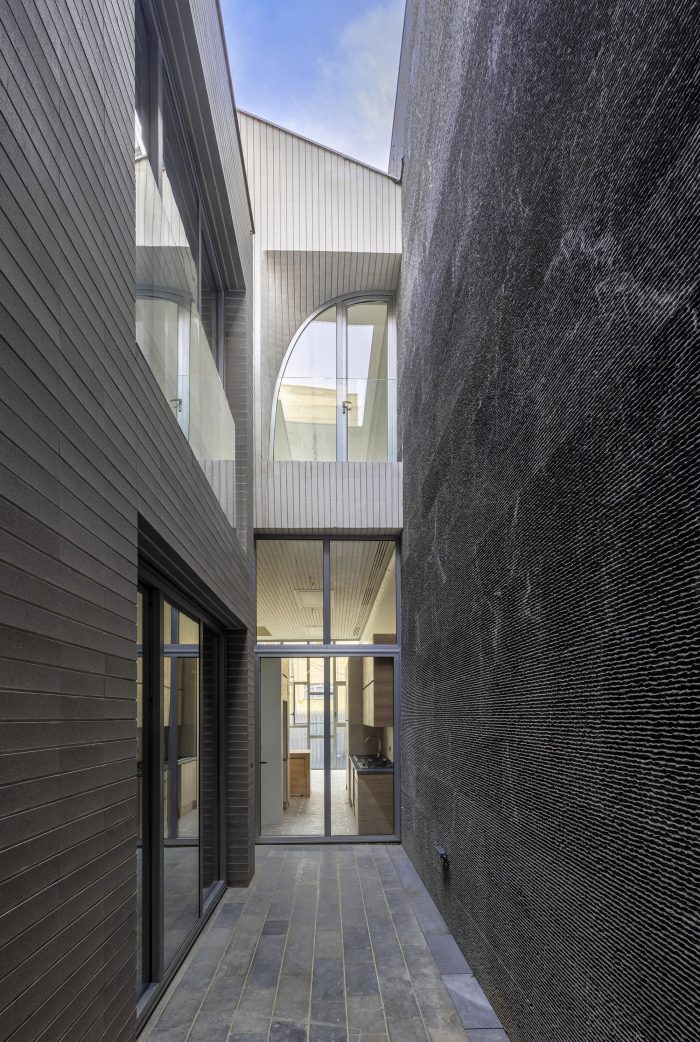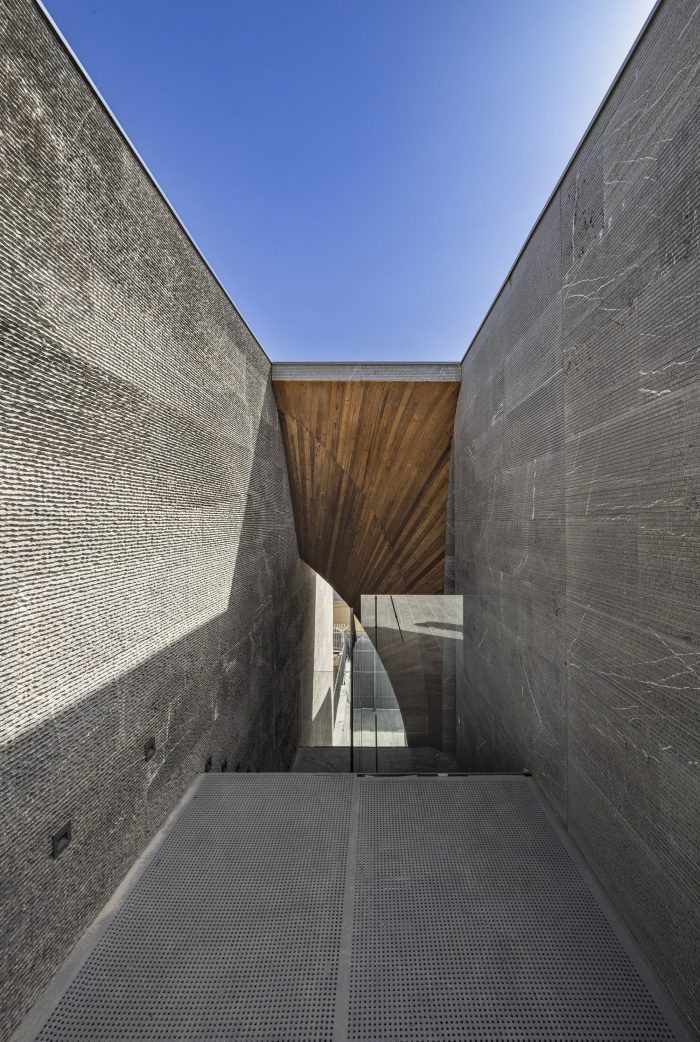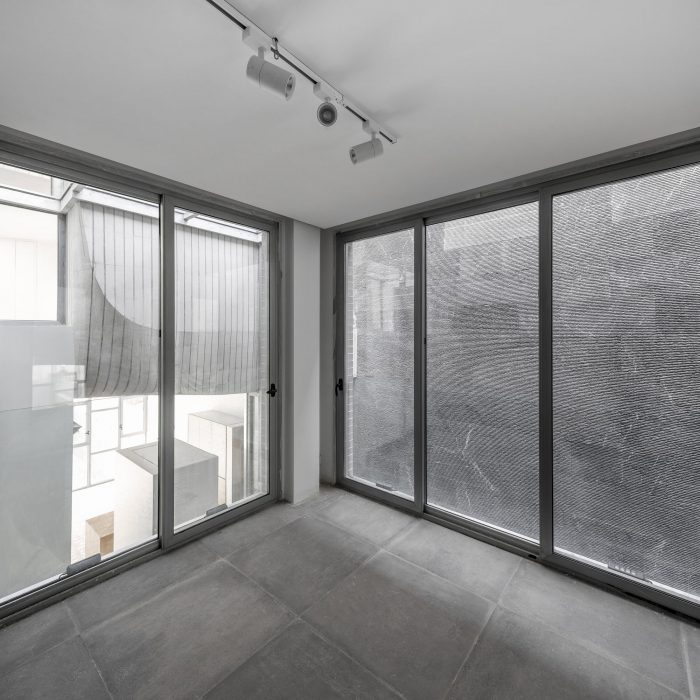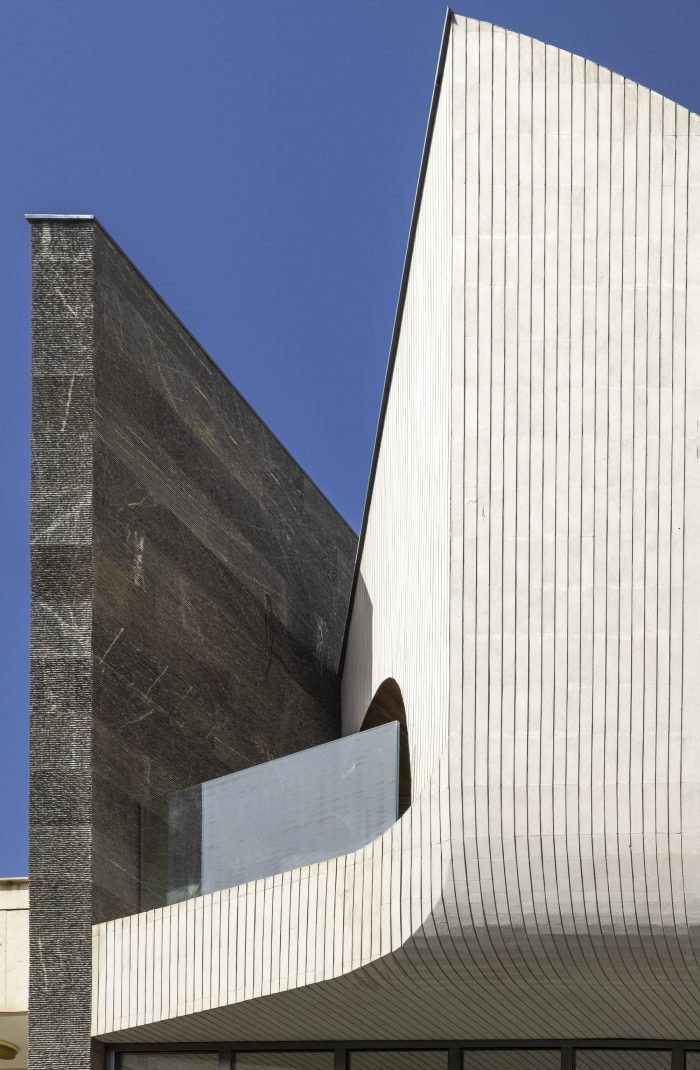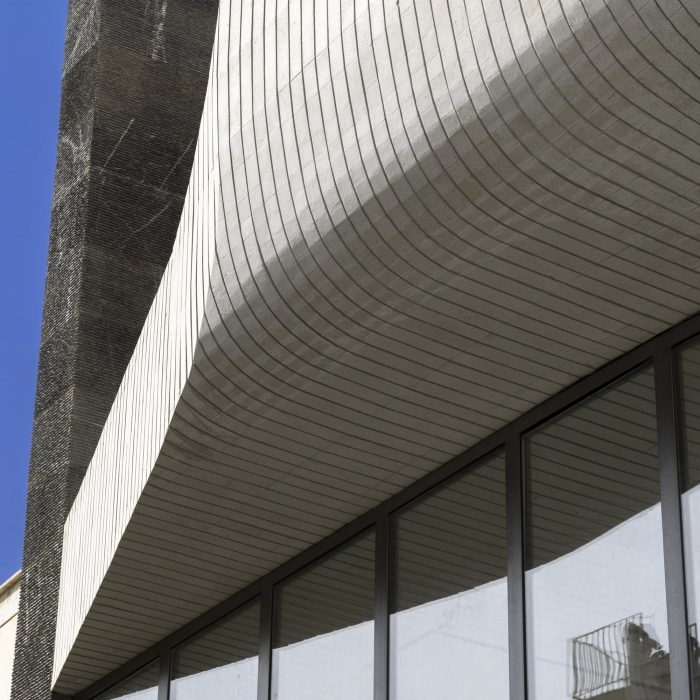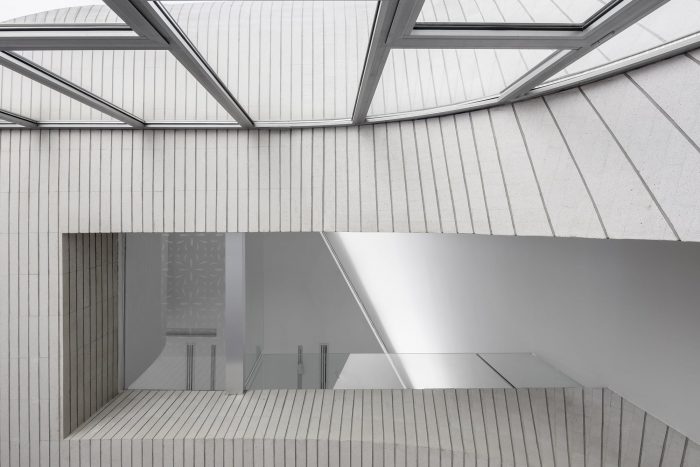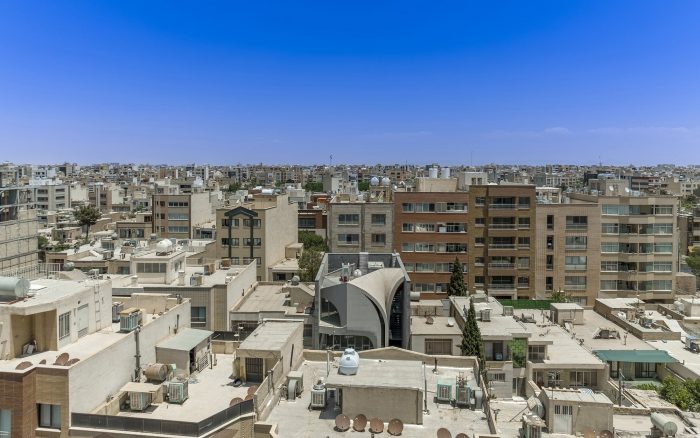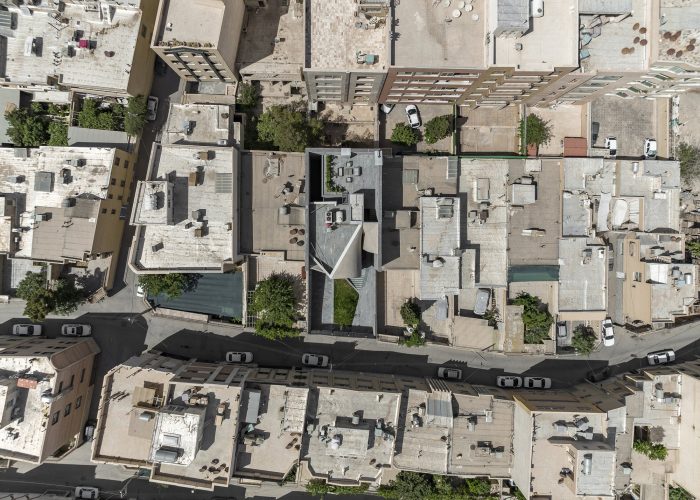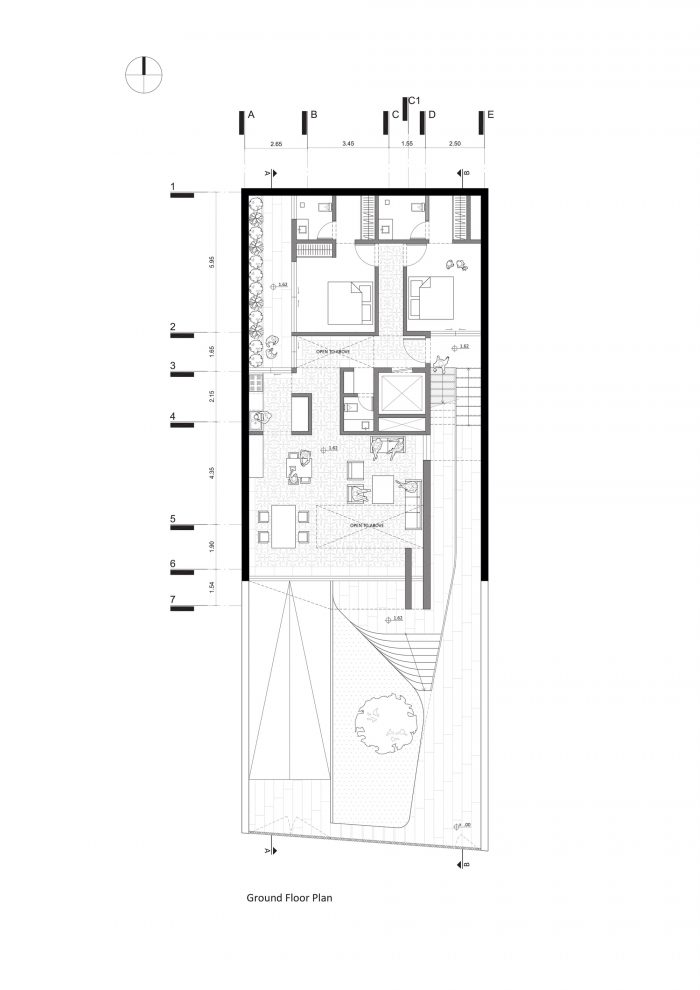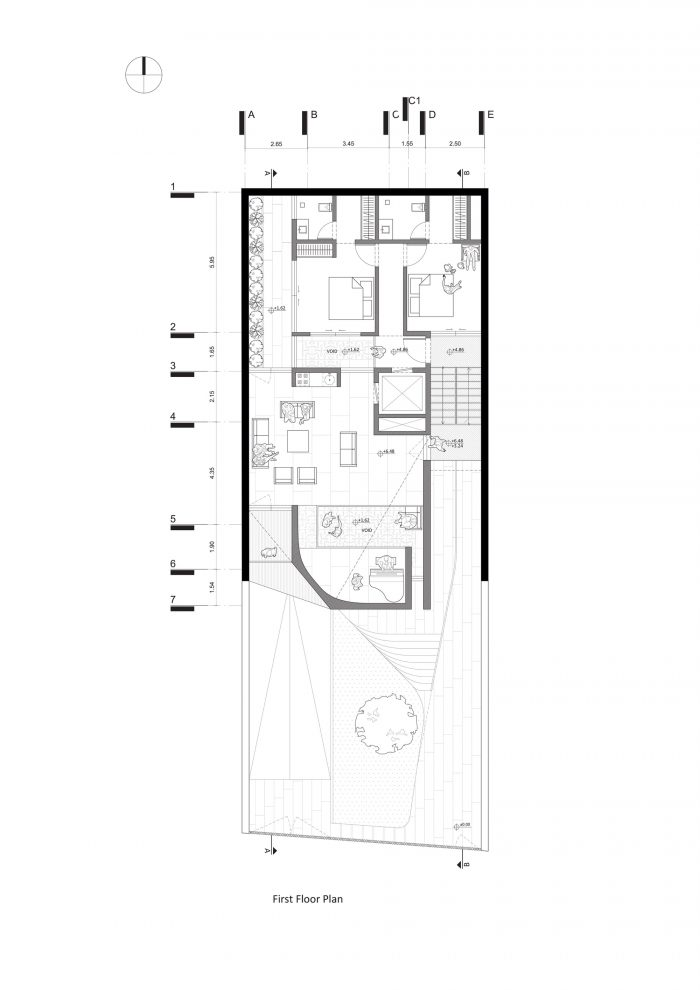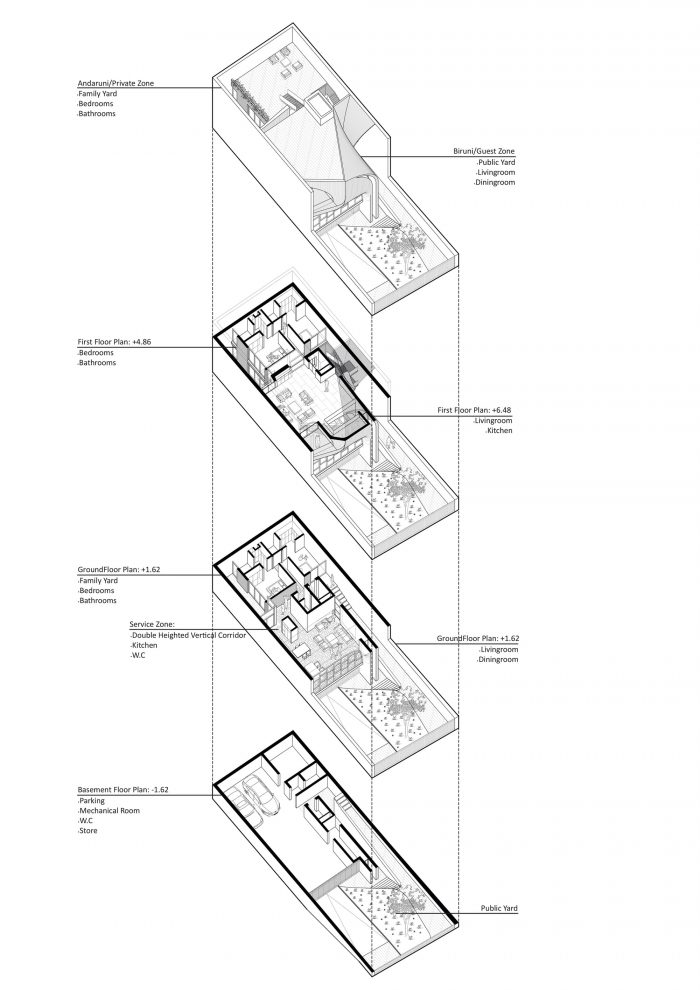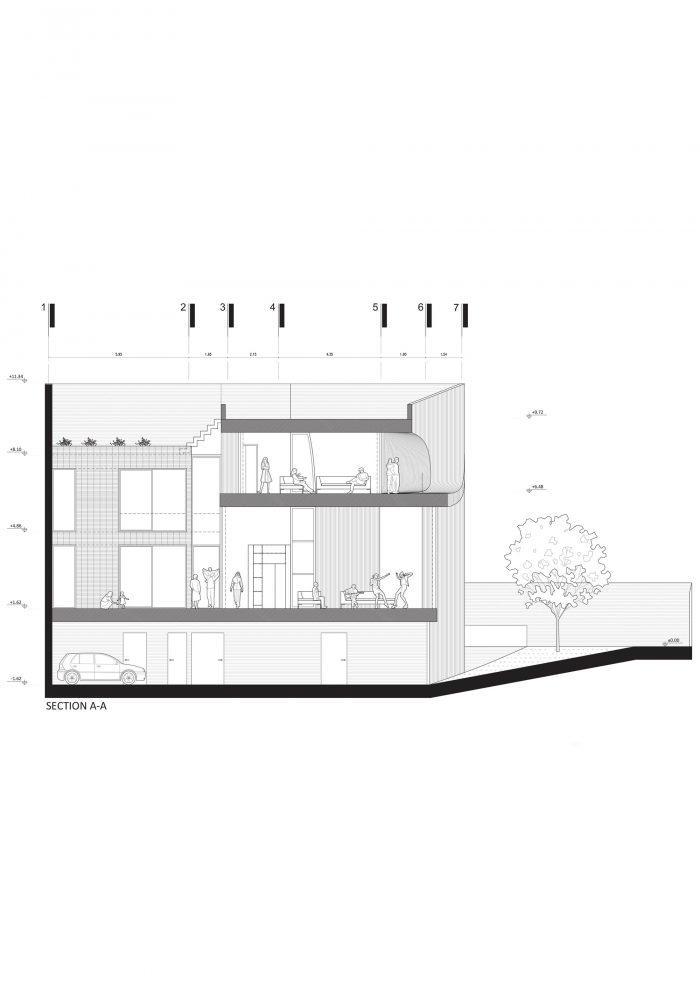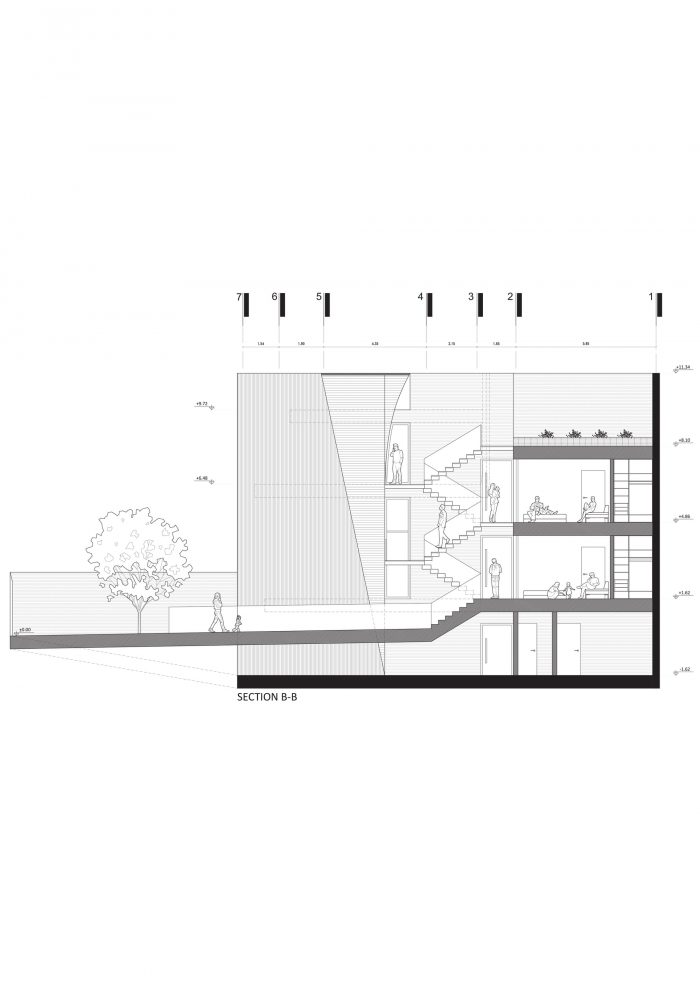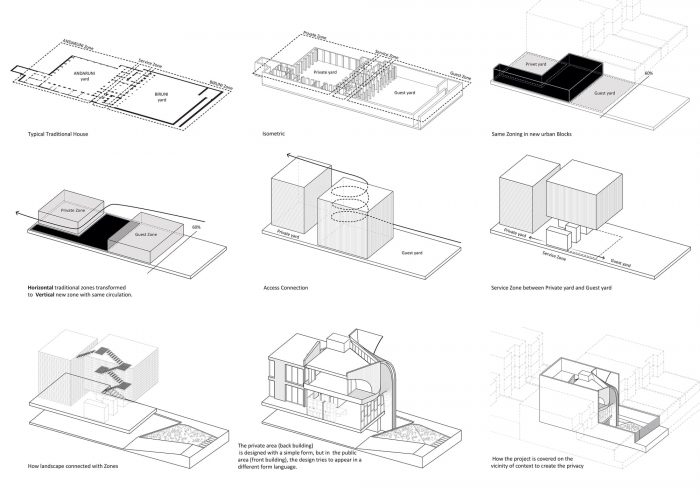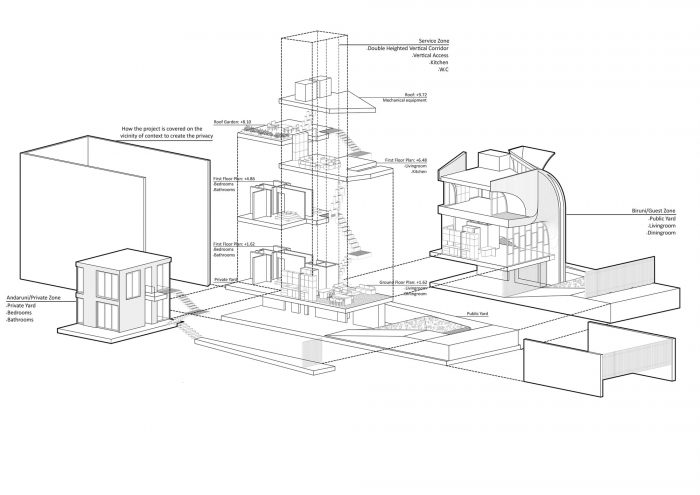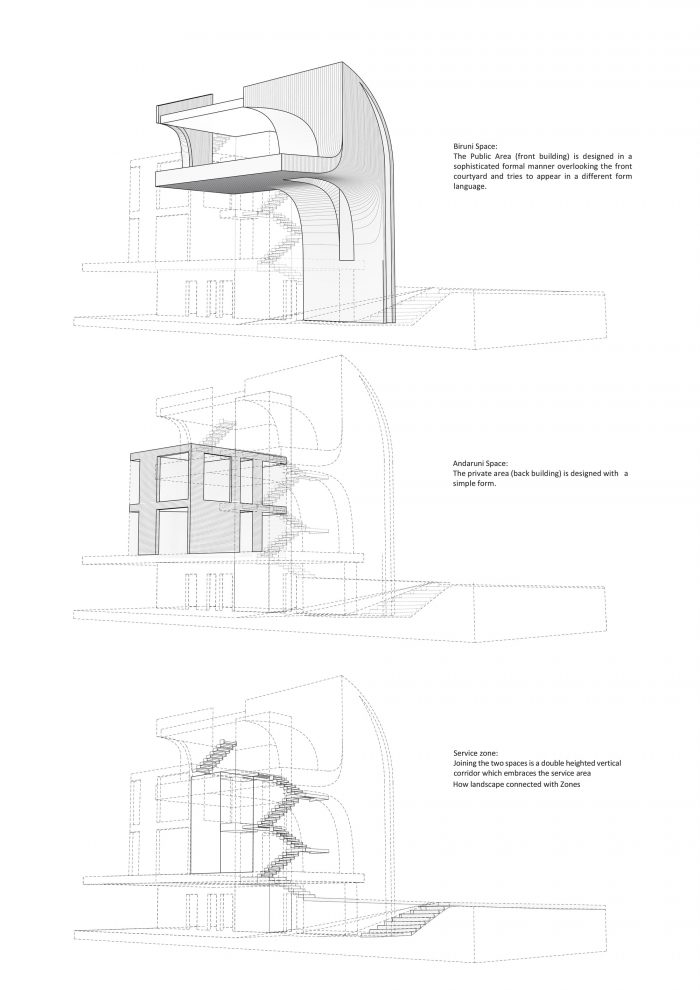H到V的房子位于伊朗伊斯法罕市的一个高密度的城市街区中。该项目的设计对应的是如何将传统的伊斯法罕房屋中的传统空间关系转变为城市街区中的现代房屋,同时保持相同的传统流通问题和空间本质。伊斯法罕被认为是世界遗产城市之一,它拥有一些最好的伊朗建筑和城市空间遗迹。这个城市的人们与多元文化和宗教的多样性共存了许多世纪,由于受到众多文化和宗教的影响,他们建立了一个非常复杂和特殊的行为模式。
The H to V House is located in a high-density urban block in the city of Isfahan-Iran. The project‘s design corresponds to how traditional spatial relationships in a conventional Isfahan House can be transformed into a modern house within an urban block, whilst maintaining the same traditional circulation concerns and essence of space. Isfahan is considered one of the world heritage cities, which houses some of the best Iranian architectural and urban space monuments. The people of this city have coexisted with multi-cultural and religious diversities for many centuries, and because of numerous cultural and religious influences, they have built a very complex and specific behavioral pattern.
这个项目为我们创造了一个机会,使我们能够认真研究一个Isfahani家庭的行为和社会关系,以其真实的传统形式。这使我们能够设计一个最适合其城市环境的房子,并在房子里保持一个关键的空间循环,这是作为他们文化行为的反映而强加的。该项目位于一块面积为300平方米的土地上,位于一个密集的环境中,旨在为中产阶级家庭服务。该地块三面相邻,市政府规定土地占用率最高为60%,建筑应位于地块的北部,材料和颜色的选择……应符合他们的限制。
This project created an opportunity for us to attentively study the behavior and the social relations of an Isfahani family, in its authentic traditional form. This enabled us to design a house that best suited its urban context and maintained a key spatial circulation within the house which is imposed as a reflection of their cultural behavior. The project is located on a plot of land with an area of 300 m² in a dense context, intended for middle-class families. The land is neighbored from three sides and the municipality dictates that the maximum land occupancy is 60%, the building should be situated to the North of the plot, and that the choice of material, and color, … are according to their restrictions
CAAT工作室在现代背景下重新定义传统的伊斯法罕房屋,为该项目找到了答案。以前在伊斯法罕建造的典型房屋由两部分组成,”Andaruni”(私人区)和 “Biruni”(客人区),它们通过一条服务走廊相互连接。位于房子后面的 “Andaruni “被认为是家庭的私人区域,有卧室和一个小的家庭院子。房子的这一部分非常简单,而且不需要奢侈的装饰。另一方面,”Biruni “是一个大型接待室,是为客人和活动准备的,它位于房子的前面,通常可以俯瞰前院,并有意在装饰和精致的建筑细节上非常丰富。
CAAT studio found the answer to the project in redefining the traditional Isfahani houses in a modern context. Typical former houses built in Isfahan consist of two parts, The “Andaruni”(Private Zone) and the “Biruni”(Guest Zone) which are interconnected by a service corridor. The “Andaruni” located at the back of the house, is considered the family’s private region with bedrooms and a small family yard. This segment of the house is very simple, and it’s exempt from extravagant decorations. On the other hand, the “Biruni” is a large reception room that is intended for guests and events, it is located in front of the house which usually overlooks the front yard, and is intentionally very rich in decorations and delicate architectural details.
在这个项目中,由于地块大小和许可证的限制,我们将传统的伊斯法哈尼房屋的典型水平平面图中的 “Andaruni和Biruni空间 “变成了垂直构图,从而将项目命名为H到V的房子。Andaruni空间以一种非常简单的方式设置在两层,并在后面有一个私人庭院连接它们,类似于传统的Isfahani房屋。另一方面,”Biruni空间 “以一种复杂的正式方式设计,俯瞰着前面的庭院,连接这两个空间的是一个双高的垂直走廊,包含了传统住宅的服务区。最后,这个项目带来了一个 “家”,它的居住者仍然可以体验到一个现代的生活空间,但仍然符合纹理特征和遗产。
In this project, due to the restrictions imposed by the plot size and the permit restrictions, we turned the typical horizontal plan diagram of traditional Isfahani houses with “Andaruni and Biruni space” into a vertical composition, thus consequently naming the project H to V house. The Andaruni space is set out on two floors in a very simple manner and has a private courtyard connecting them at the back similar to a traditional Isfahani House. The “Biruni Space” on the other hand is designed in a sophisticated formal manner overlooking the front courtyard, joining the two spaces is a double-height vertical corridor that embraces the service area of a traditional home. To conclude this project has brought together a” Home” where its occupants can still experience a modern living space that is still in line with the textural identity and heritage.
伴随着项目的理念,在客人区和私人区都可以看到材料颜色选择的多样性。(白砖竖排,灰砖横排)。在Guest区,白砖的外壳以塑形的方式覆盖了项目的内外,使结构和材料得到了融合,而在Private区,已经形成了一个灰色的砖块盒子。
Along with the idea of the project, variety in the choice of material color can be seen in both Guest and Private zones. (white brick in vertical rows, gray brick in horizontal rows). In the Guest zone, the white brick shell covers the inside and outside of the project with a plastic shape, so that the structure and material have been merged, and the private zone, has formed as a gray brick box.
Architects: CAAT Studio
Area : 450 m²
Year : 2022
Photographs :Parham Taghioff, Persia Photography Center
Manufacturers : Bahareh Ceramics, Hassan Anari, Hesam Kazemi, Namachin Brick
Principle Architect And Designer : Mahdi Kamboozia
Architect And Project Manager : Helena Ghanbari
Architecture Team : Samaneh Nematzadeh
Physical Model : Saba Mirhosseini
Executive Manager Of Caat Studio : Farhood Moghadam
Constraction Counselor Of Caat Studio : Omid Khajeh
Counselor & Executive Manager Of Finished Brick : Hamid Jafarian
Executive Client Manager : Noorollahi
Executive Client Counselor : Reza Rooholamin
Structural Designer In Curves & Special Parts : Behrang Baniadam
City : Isfahan
Country : Iran

